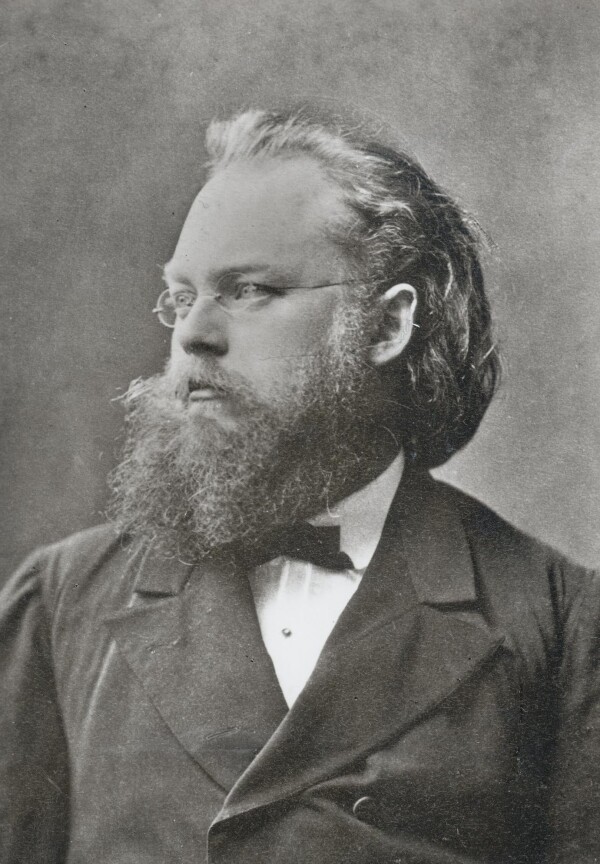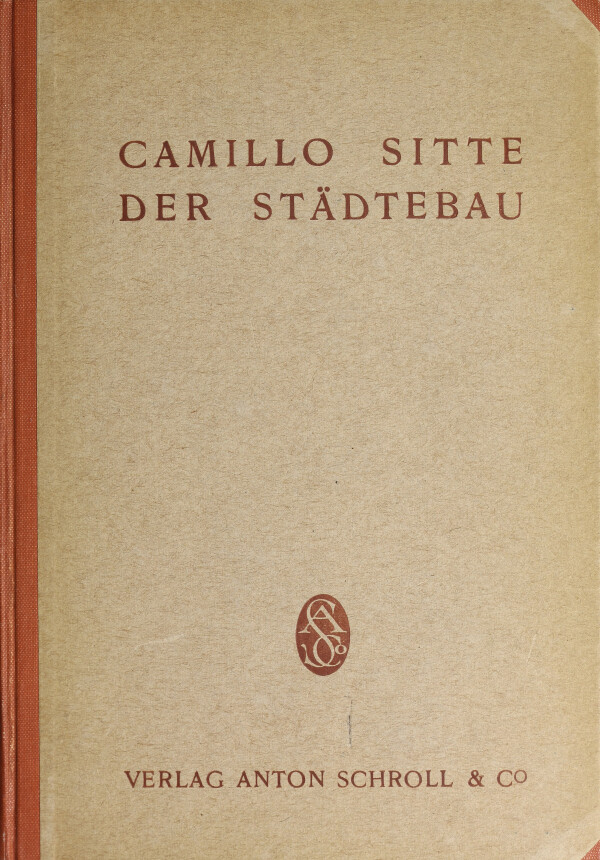Camillo Sitte

Camillo Sitte, around 1883, Austrian National Library, Vienna
© Picture Archives and Graphics Department, Austrian National Library

Camillo Sitte: Urban planning according to its artistic principles, 1922
© The Getty Research Institute, Los Angeles
The architect and teacher Camillo Sitte was a trailblazer of modern city planning. He was considered an advocate of the Gesamtkunstwerk and an ardent critic of Modernism and hence also of the Vienna Secession.
Camillo Sitte was born in Vienna as the son of an architect in 1843. He attended the Polytechnic Institute and the University of Vienna from 1864 to 1869, studying architecture, art history and archaeology. His teachers included the architect Heinrich Ferstel and the art historian Rudolf Eitelberger. The latter became an important mentor for him.
Teacher and Theoretician of City Planning
Following his graduation, Sitte worked as an assistant to his father for several years. In 1875, he became the director of the newly founded State Trade School in Salzburg, a position for which Rudolf Eitelberger had recommended him. He returned to Vienna eight years later and taught at the local State Trade School, of which he would later become the director. During this time, he rarely worked as an architect in Salzburg and Vienna.
In addition to teaching in Salzburg and Vienna, Sitte was also committed to the preservation of monuments and studied theories of city planning. He wrote several essays and lectures on this topic. In 1883 he published his most important theoretical manifesto: Der Städtebau nach seinen künstlerischen Grundsätzen [City Planning According to Artistic Principles]. The book caused a stir internationally. The architect became the leading expert on city planning and was consulted in the planning and development of several small and medium-sized cities in Europe. Together with the German architect Theodor Goecke, Sitte also started the trade journal Der Städtebau in 1903. Shortly before the first issue was published in 1904, however, Camillo Sitte passed away in November 1903.
Secession and Monumental Art (1903)
Camillo Sitte, who joined the Cooperative of Visual Artists in Vienna in the same year as Gustav Klimt, was an ardent critic of Modernism and hence also of the Vienna Secession. In May 1903, the newspaper Neues Wiener Tagblatt published a series of articles by the theoretician titled Sezession und Monumentalkunst [Secession and Monumental Art], in which Sitte questioned the ideas and principles of Secessionism. According to Sitte, the Secession itself was a “hodgepodge” and had advertised itself too much:
“Everybody knows how this common buzzword ‘Secession’ describes an accumulated jumble of things true and false, things beautiful and almost repulsive to the senses, things healthy and almost ludicrous […].”
In this context, he was especially outspoken in his criticism of Otto Wagner’s architectural oeuvre. Sitte also referred to the painter Gustav Klimt, writing that the artist’s works were “wonderful,” but that the Beethoven Frieze (1901/02, Belvedere, Vienna), which had been presented for the first time at the “XIV. Ausstellung der Vereinigung bildender Künstler Österreichs Secession” [“14th Exhibition of the Association of Austrian Artists Secession”] in 1902, was “truly and simply hideous from moral and aesthetic points of view.”
Literature and sources
- Architektenlexikon. Wien 1770–1945. Camillo Sitte. www.architektenlexikon.at/de/603.htm (04/21/2020).
- Neues Wiener Tagblatt, 05.05.1903, S. 1-4.
- Neues Wiener Tagblatt, 06.05.1903, S. 1-3.
- Felix Czeike (Hg.): Historisches Lexikon Wien, Band 5, Vienna 1997, S. 236.
- Österreichische Akademie der Wissenschaften (Hg.): Österreichisches Biographisches Lexikon 1815–1950, Band 12, Vienna 2005.
- Hans Vollmer (Hg.): Allgemeines Lexikon der Bildenden Künstler von der Antike bis zur Gegenwart. Begründet von Ulrich Thieme und Felix Becker, Band XXXI, Leipzig 1937, S. 106.
- Andreas Beyer, Bénédicte Savoy, Wolf Tegethoff (Hg.): Allgemeines Künstler-Lexikon. Die bildenden Künstler aller Zeiten und Völker, Band CIV, Berlin - New York 2019, S. 138.
- Architekten- und Baumeister-Zeitung, 22.11.1903, S. 1-2.
- Architekten- und Baumeister-Zeitung, 27.03.1904, S. 2.
- Österreichische Kunst-Chronik, Nummer 25 (1891), S. 675.

